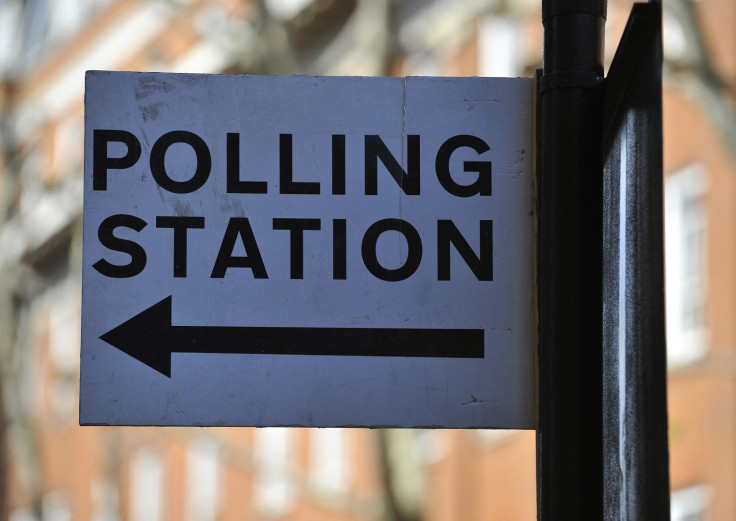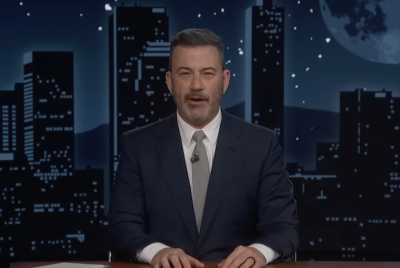Local elections put political leaders to task as general election looms
The upcoming May local elections present the opportunity for political leaders to test the electoral strength of their parties ahead of the next general election.

The local elections this year are set to be held on the 4th of May. With the next general election scheduled to be held by January 2025, the results could signal attitudes across the country towards mainstream political parties, potentially reflecting national voting intention. Therefore, for those interested in the outcome of the next general election, the May local elections are a key analysis point.
International research and data group, YouGov, conducted a poll from the 29th to the 30th of March indicating that national voting intention dramatically favours Labour over the Conservatives. The Conservatives are on just 26 per cent, with Labour on 46 per cent. According to Electoral Calculus, based on data gathered from the 22nd Feb to the 27th of March, if there were a general election tomorrow, Labour would likely win 457 seats in the House of Commons, well over the 326 needed for a majority. To put that into perspective, in 1997 under the leadership of Tony Blair, Labour won 418 seats.
This begs the question of whether Labour's national poll lead will equate to votes at the local elections in May and whether or not success at the local elections indicates prospective success at a general election.
In another research conducted by YouGov, we see that while local elections can point us in the right direction in terms of our understanding of the national political mood, it is not rational to assume that people will always vote the same way in general elections as they do in local elections. Furthermore, voter turnout tends to be lower at local elections, averaging around 30 per cent, meaning many of those who vote at general elections may not be represented in the results of local elections.
However, whatever the similarities and differences in the results of the upcoming May local elections and the forthcoming general election, the local election campaigns present an opportunity for political parties and their leaders to communicate their ideas to the public in the hope of boosting their chances at the next general election.
So what might we expect from the main three UK political parties?
For the Conservatives, Rishi Sunak will aim to secure favour with voters after leading the party and government through turbulent times in the last few years. Brexit, COVID-19, "Party-gate", and the Ukraine war are issues which have presented stormy seas to the Conservatives since 2019.
For Labour, Sir Kier Starmer will be looking to demonstrate Labour's electoral credibility after the loss of three general elections which have seen Labour out of power for 13 years now. And for the Liberal Democrats, Sir Ed Davey will be looking to get the word out there once the party of government is back on the UK political map.
Previous Local Elections
Most of the seats to be contested in May this year were last put to the electorate in May 2019. At the time, Theresa May led the Conservative Party, and Jeremy Corbyn the Labour Party. Both these leaders struggled when it came to general elections. Theresa May famously lost the Conservative majority in 2017 despite expectations of a big majority. Corbyn saw Labour elected as the second largest parliamentary party in both 2017 and 2019, failing to see Labour back into power after Ed Miliband's loss in 2015.
Accordingly, at the 2019 local elections, the two main parties also struggled, with both the Conservatives and Labour each securing just 28 per cent of the popular vote. In May 2019, the conservatives polled lower the Labour for voting intention at a general election, averaging just less than 30 per cent across multiple polls. Labour too averaged less than 35 per cent. Moreover, struggles to be seen as competent governing parties at the national level correlated to poor results in local elections.
More specifically, at the 2019 local elections both the Conservatives and Labour lost councillors and councils. The Conservatives saw 3564 councillors elected, 1334 less than in 2015. The number of councils the Conservatives controlled decreased dramatically by 49 to 143, a 15-year low point. Labour won 24 per cent of the seats contested, one per cent less than in 2015, and under half of the proportion, it won in 2018. Labour also lost control of six councils.
However, with the new leadership of Boris Johnson, in the months before December 2019, Conservative poll ratings for general election voting intention dramatically improve relative to the Labour Party. This rapid change in the national political climate demonstrates the significance of a change in party leadership. Consequently, at the 2019 general election (held in December) the Conservatives won 365 seats and a majority in the House of Commons, securing 43.6 per cent of the popular vote. In contrast, still, under the leadership of Jeremy Corbyn, Labour secured just 202 seats with 32.1 per cent of the popular vote.
Following Johnson's loss of public popularity after Party-gate, and pressures on the government over the cost of living, the last set of local elections in May 2022 did not end well for the Conservatives. The Tories won just 24 per cent of the total number of seats contested, down from 50 per cent in 2021. In contrast, Labour won 52 per cent of the seats contested, a significant rise from the 28 per cent they won in 2021.
Given that it seems unlikely that at the forthcoming general election, neither Rishi Sunak nor Sir Kier Starmer will not be party leaders, there could be more consistency in the results of the 2023 May local elections and the upcoming general election than there was in 2019. That is, in terms of which of the main two political parties comes out on top.
Labour's Campaign
Sir Kier Starmer launched Labour's local election campaign in Swindon. He pledged that if Labour were in power now, they would freeze council tax this year. Labour would pay for this through a higher windfall tax on energy firms. Kier Starmer claimed this would be "a tax cut for the 99 per cent of working people... compared with the tax cut for the richest one per cent that we get under the Tories."
Starmer emphasised the need to communicate to "every doorstep" the choices that Labour would take in government. It seems the Labour leader is using his local election campaign to convey to voters what Labour stands for, presumably with bigger ambitions at the forthcoming general election in mind.
However, the Labour Party will not commit to implementing its freeze on council tax if it wins the next general election. Shadow Chancellor Rachel Reeves has stated that Labour would assess the public finances "going into a general election." Moreover, Starmer has sought to create the idea that Labour is a financially responsible party to restore Labour's reputation as a party of government and not just a party content with opposition.
The launch of Labour's local election campaign comes shortly after The National Executive Committee (NEC) voted in favour of a motion proposed by Kier Starmer that prevents former Labour leader Jeremy Corbyn from standing at the next general election as a Labour candidate. Arguably, the move by Starmer and the NEC is symbolic of the party change that has occurred under new leadership. This a point the labour executive must be keen to convey given the party's electoral history over the past 13 years.
The Conservative Campaign
The Conservatives held a "phantom election launch" in the Black Country, for its local election campaign. No national media were invited, with the campaign launch going under the country's radar. The Conservatives will find out this local election whether the damage done to their reputation, first by Boris Johnson, and then by Liz Truss, will translate into notable electoral damage.
This deliberately quiet campaign launch is not surprising considering research by Colin Rallings and Michael Thrasher which suggests that the Conservatives could lose over 1000 seats if there is a six per cent swing in favour of Labour. Put simply, the Conservatives have the potential to experience severe losses in the May local elections.
The launch of the Tories' deliberately discrete local election campaign comes after Jeremy Hunt presented the government's Spring Budget earlier in March. Mr Hunt presented the budget amidst what is currently the largest fall in living standards since records began in the 1950s. Moreover, the current economic climate is unlikely to reflect well on the government amongst lower and middle-income voters.
Amidst these bleak prospects for the Conservative party, Sunak visited Darlington in north-east England, promising new powers and money to tackle potholes. In the spring budget, the government announced that £200m would be invested in tackling potholes.
However, more substantively, on the 26th of March, the government outlined plans to tackle anti-social behaviour. Measures include increased fines and enhanced drug testing, with the government aiming to reduce tolerance of anti-social behaviour. Crucially, they intend to empower the police and local authorities to take on the problem of anti-social behaviour. Measures include a ban on nitrous oxide (referred to as "laughing gas" or "NOS"), which is the most popular amongst 16-24-year-olds. According to the government, the police have linked the usage of drugs to antisocial behaviour.
Similarly, on the 23rd of March Labour also published its plans to deal with crime, announcing the intention to decrease serious violent crime by half, and create the "highest levels" of public confidence in the police and criminal justice system.
The Liberal Democrat Campaign
Whilst launching the Liberal Democrat campaign on the 29th of March, party leader Sir Ed Davey referred to the gains made last May in the local elections, in which the Lib Dems gained the most number of seats. The party won 16 per cent of all the contested seats, an increase of 4 per cent compared to 2021, only 8 per cent behind the Conservative's 24 per cent. Davey explained how strong gains at the forthcoming local elections can create the basis for liberal democrat gains at the next general election.
The Lib Dems experienced an electoral wipeout at the 2015 general election, winning just 8 seats with 7.9 per cent of the vote, having previously used the 57 seats they won at the 2010 general election to form a coalition government with the Conservative party. Since then, the Lib Dems have struggled to recover. In 2017, under the leadership of Tim Farron, they secured 12 seats, but a decrease of 0.5 percentage points in the popular vote share. In 2019, under the leadership of Jo Swinson, their vote share increased, but they won only 11 seats.
However, Electoral Calculus predict that if there were a general election tomorrow, the Lib Dems would win just 20 seats with 9.4 per cent of the national vote. Granted, this is an improvement compared to 2019 - in terms of seats - but it's hardly back to the success of 2010 when the party won enough parliamentary power to enter government in coalition with the Conservatives. Moreover, this only underscores the motivation for the Lib Dems to get their message out to their voters to maximise their chances of recovery at the next general election.
© Copyright IBTimes 2025. All rights reserved.





















